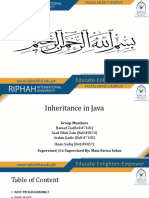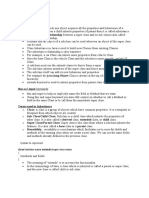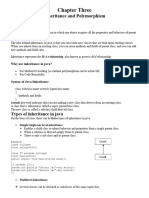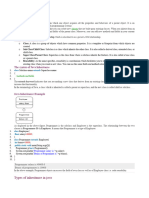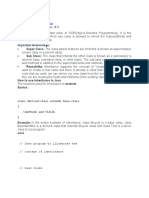0% found this document useful (0 votes)
7 views15 pagesInheritance
Inheritance is a fundamental concept in object-oriented programming where a new class (sub-class) is derived from an existing class (super-class), allowing the sub-class to inherit features and methods. It promotes code reusability and can take forms such as single, multi-level, and hierarchical inheritance. Private members of a super-class are not accessible to its sub-classes, ensuring encapsulation.
Uploaded by
Sajmal SajmalCopyright
© © All Rights Reserved
We take content rights seriously. If you suspect this is your content, claim it here.
Available Formats
Download as PDF, TXT or read online on Scribd
0% found this document useful (0 votes)
7 views15 pagesInheritance
Inheritance is a fundamental concept in object-oriented programming where a new class (sub-class) is derived from an existing class (super-class), allowing the sub-class to inherit features and methods. It promotes code reusability and can take forms such as single, multi-level, and hierarchical inheritance. Private members of a super-class are not accessible to its sub-classes, ensuring encapsulation.
Uploaded by
Sajmal SajmalCopyright
© © All Rights Reserved
We take content rights seriously. If you suspect this is your content, claim it here.
Available Formats
Download as PDF, TXT or read online on Scribd
/ 15










